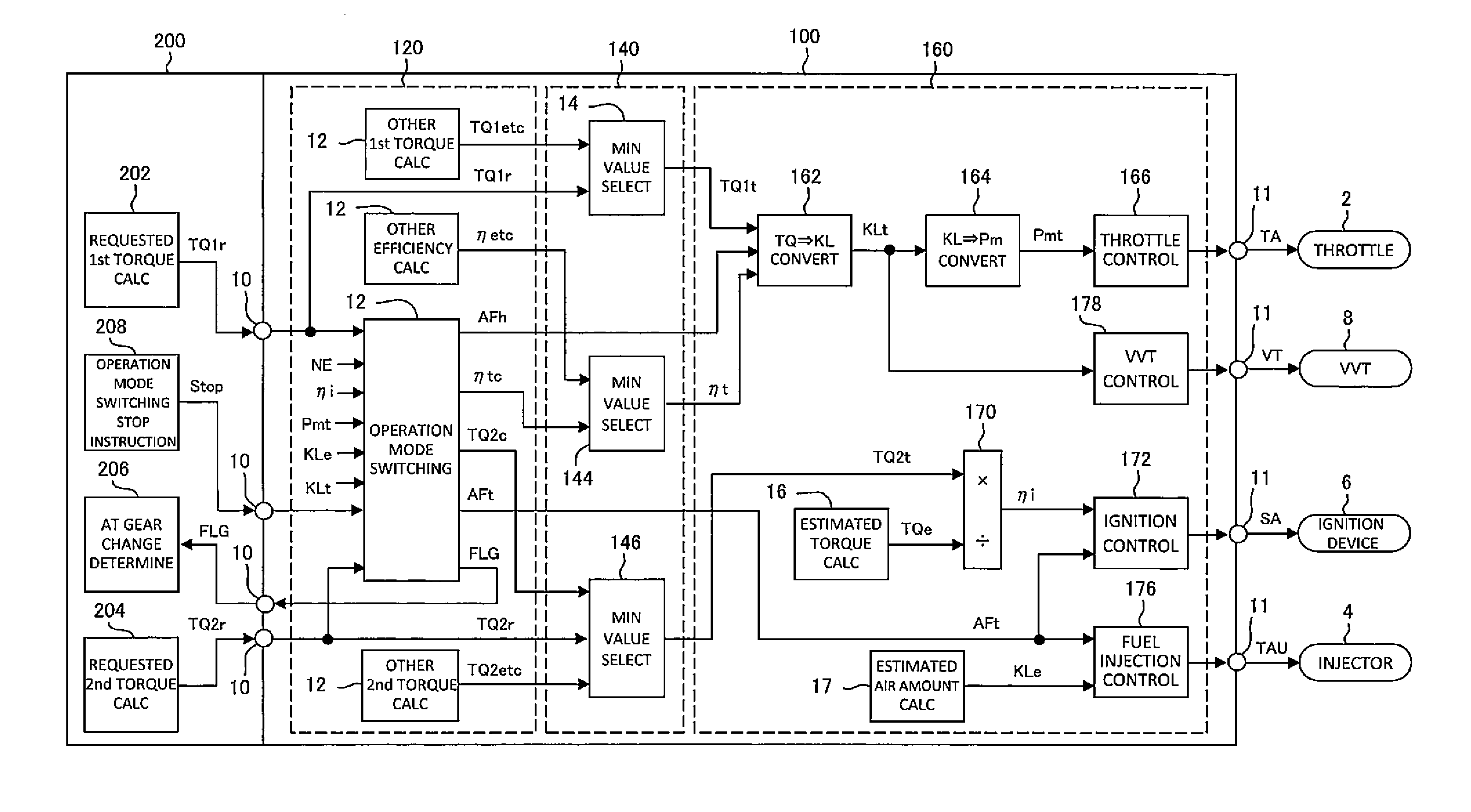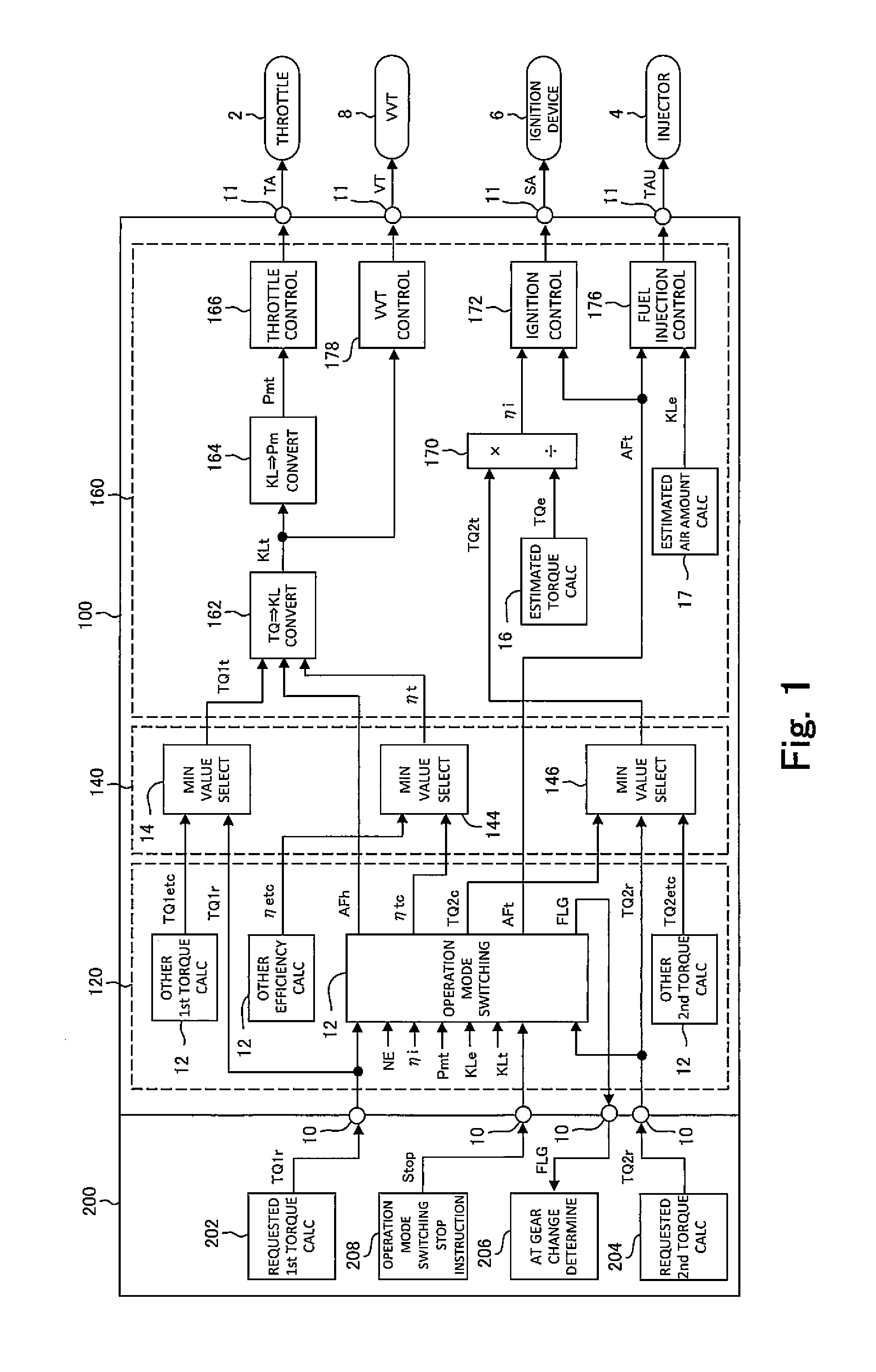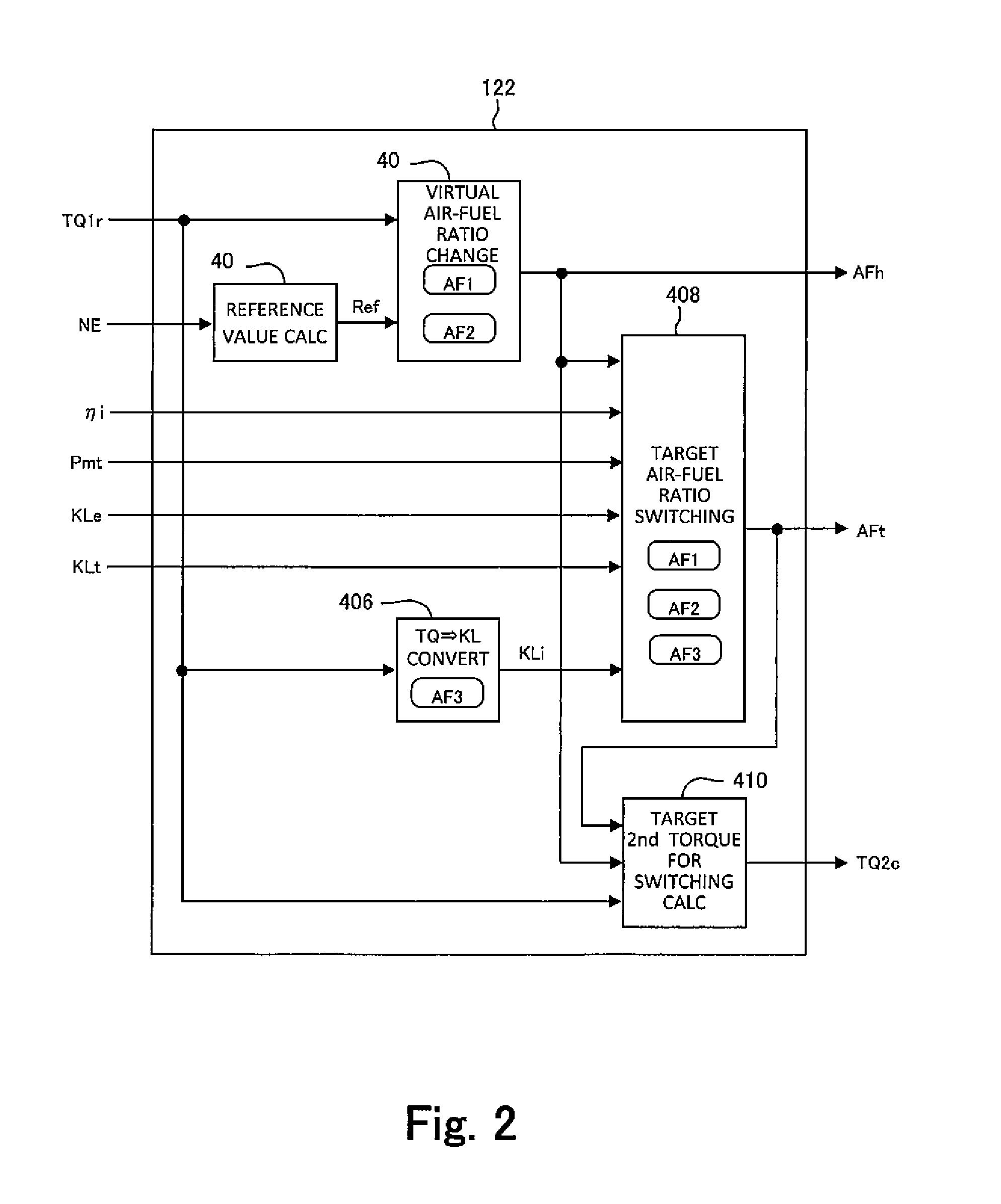Control device for internal combustion engine with turbocharger
a control device and turbocharger technology, which is applied in the direction of electric control, ignition automatic control, machines/engines, etc., can solve the problems of deteriorating drivability, deteriorating emissions, and retardation of ignition timing, so as to improve the supercharging effect, and improve the effect of supercharging
- Summary
- Abstract
- Description
- Claims
- Application Information
AI Technical Summary
Benefits of technology
Problems solved by technology
Method used
Image
Examples
embodiment 1
[0027]Hereunder, Embodiment 1 of the present invention is described with reference to the drawings.
[0028]An internal combustion engine (hereinafter, referred to as “engine”) which is a control object in the present embodiment is a spark-ignition type, four-cycle reciprocating engine, and is a turbo engine in which a turbocharger is installed. Further, the engine is a so-called “lean-burn engine” that is configured to be capable of selecting between a stoichiometric mode (first operation mode) that performs operation according to a theoretical air-fuel ratio and a lean mode (second operation mode) that performs operation according to an air-fuel ratio that is leaner than the theoretical air-fuel ratio as the operation mode of the engine.
[0029]An ECU (electrical control unit) mounted in the vehicle controls operations of the engine by actuating various kinds of actuators that are provided in the engine. The actuators actuated by the ECU include a throttle and a variable valve timing d...
embodiment 2
[0100]Next, Embodiment 2 of the present invention will be described with reference to the drawing.
[0101]An engine that is taken as a control object according to the present embodiment is a lean-burn engine with a turbocharger, similarly to Embodiment 1. Actuators that are actuated by an ECU that controls the operations of the engine according to the present embodiment include, in addition to a throttle, a VVT, an ignition device and an injector, a waste gate valve (hereunder, referred to as “WGV”) that is provided in a turbocharger. The WGV is a supercharging characteristic varying actuator that varies a supercharging characteristic of the turbocharger. Because a supercharging characteristic of the turbocharger causes an air amount to change, the WGV is included in the first actuator that causes an air amount to change, similarly to the throttle and VVT.
[0102]In FIG. 7, the logic of the ECU according to the present embodiment is illustrated by means of a block diagram. The ECU inclu...
PUM
 Login to View More
Login to View More Abstract
Description
Claims
Application Information
 Login to View More
Login to View More - R&D
- Intellectual Property
- Life Sciences
- Materials
- Tech Scout
- Unparalleled Data Quality
- Higher Quality Content
- 60% Fewer Hallucinations
Browse by: Latest US Patents, China's latest patents, Technical Efficacy Thesaurus, Application Domain, Technology Topic, Popular Technical Reports.
© 2025 PatSnap. All rights reserved.Legal|Privacy policy|Modern Slavery Act Transparency Statement|Sitemap|About US| Contact US: help@patsnap.com



